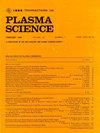位于赤道港 12 的热核实验堆广角观察系统(WAVS)舱内快门的最终设计和测试
IF 1.3
4区 物理与天体物理
Q3 PHYSICS, FLUIDS & PLASMAS
引用次数: 0
摘要
热核实验堆广角观察系统(WAVS)是用于机器保护、等离子体控制和物理分析的主要诊断设备。它将通过红外热成像技术测量面向等离子体的部件的表面温度,并在可见光范围内对等离子体发射进行成像。全球系统由位于四个赤道端口的 15 条视线(LoS)组成,覆盖托卡马克内表面的 70%。本文的重点是波束系统每条视线中的一个舱内组件--快门。事实上,快门将保护第一反射镜免受等离子体快速粒子的直接侵蚀和/或第一反射镜壁调节过程中辉光放电产生的慢速粒子的直接污染。该机构集成在每个第一反射镜单元内,是一个关键部件,因为它受到严格的限制,同时还必须在热核实验堆的所有阶段实现 30000 个周期的稳健电影效果。快门装置由一个气动波纹管组成,通过两个枢轴的线性位移带动杠杆叶片旋转。两个电气末端开关对其行程进行监控。除保护功能外,快门还包含一个现场红外校准源。该校准源包括一个由热电偶调节的加热器,安装在移动叶片上。除波纹管和叶片等所有移动部件外,快门完全水冷。这种快门的原型已经开发、制造和测试完毕。在保持其完全可操作性的前提下,已在代表性条件下实现了 100000 次以上的启动。本文介绍了在 FDR 上展示的快门设计,并描述了通过热循环测试对其进行的验证。本文章由计算机程序翻译,如有差异,请以英文原文为准。
Final Design and Tests of the In-Vessel Shutter of the ITER Wide Angle Viewing System (WAVS) in Equatorial Port 12
The ITER wide angle viewing system (WAVS) is a major diagnostic for machine protection, plasma control, and physics analysis. It will measure the surface temperature of the plasma-facing components by infrared thermography and will image the plasma emission in the visible range. The global system is composed of 15 lines of sight (LoS) located in four equatorial ports, covering 70% of the Tokamak internal surface. This article focuses on an in-vessel component, the shutter, present in each line of sight of the WAVS. Indeed, the shutter will protect the first mirrors from direct erosion due to fast particles from the plasma and/or direct contamination due to slow particles from glow discharges during first wall conditioning. Integrated within each first mirror unit, this mechanism is a critical component since it undergoes severe constraints, while it has to perform a robust cinematic to achieve 30000 cycles over all ITER phases. The shutter mechanism consists of a pneumatic actuated bellows, which rotates a lever blade, thanks to its linear displacement through two pivots. Two electrical end switches monitor its stroke. On top of the protection function, the shutter incorporates an in situ infrared calibration source. This calibration source consists in a heater, regulated by a thermocouple and inserted on its moving blade. The shutter is fully water-cooled, except all mobile parts, such as the bellows and the blade. A prototype of this shutter has been developed, manufactured and tested. Over 100000 actuations have been achieved under representative conditions while keeping its full operability. This article presents the shutter’s design presented at the FDR and describes its validation thanks to the thermal cycling tests.
求助全文
通过发布文献求助,成功后即可免费获取论文全文。
去求助
来源期刊

IEEE Transactions on Plasma Science
物理-物理:流体与等离子体
CiteScore
3.00
自引率
20.00%
发文量
538
审稿时长
3.8 months
期刊介绍:
The scope covers all aspects of the theory and application of plasma science. It includes the following areas: magnetohydrodynamics; thermionics and plasma diodes; basic plasma phenomena; gaseous electronics; microwave/plasma interaction; electron, ion, and plasma sources; space plasmas; intense electron and ion beams; laser-plasma interactions; plasma diagnostics; plasma chemistry and processing; solid-state plasmas; plasma heating; plasma for controlled fusion research; high energy density plasmas; industrial/commercial applications of plasma physics; plasma waves and instabilities; and high power microwave and submillimeter wave generation.
 求助内容:
求助内容: 应助结果提醒方式:
应助结果提醒方式:


